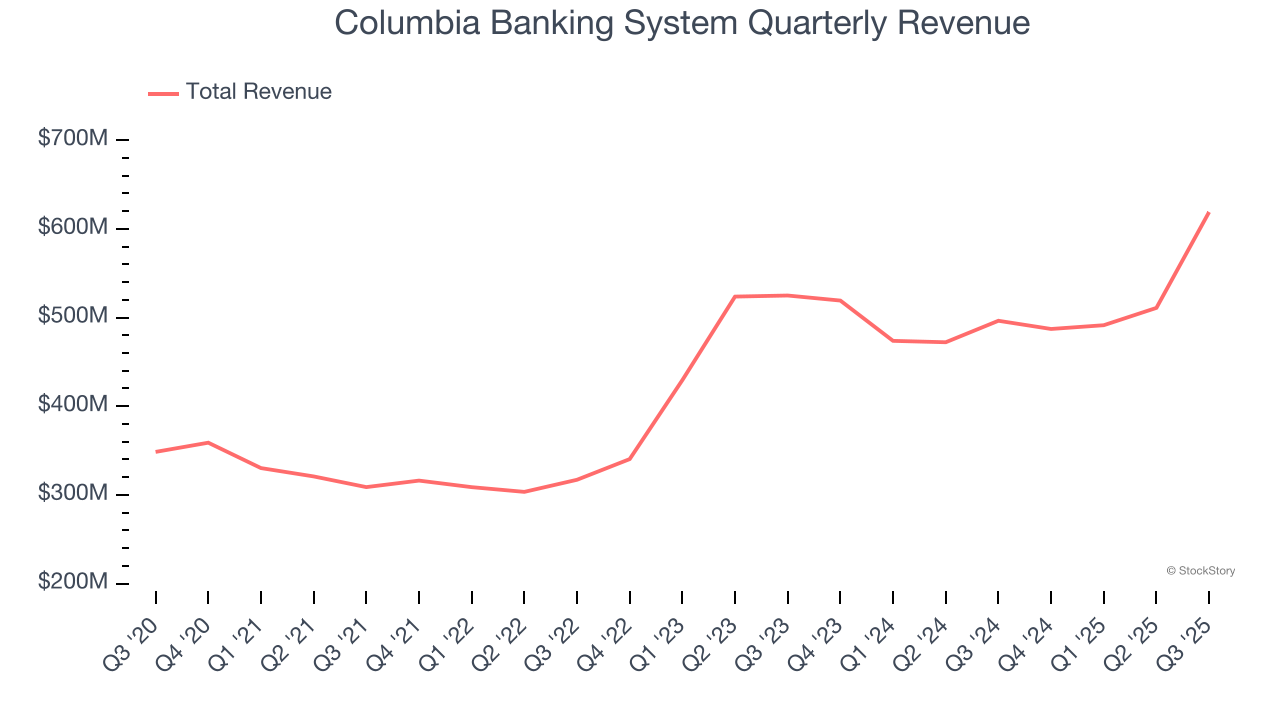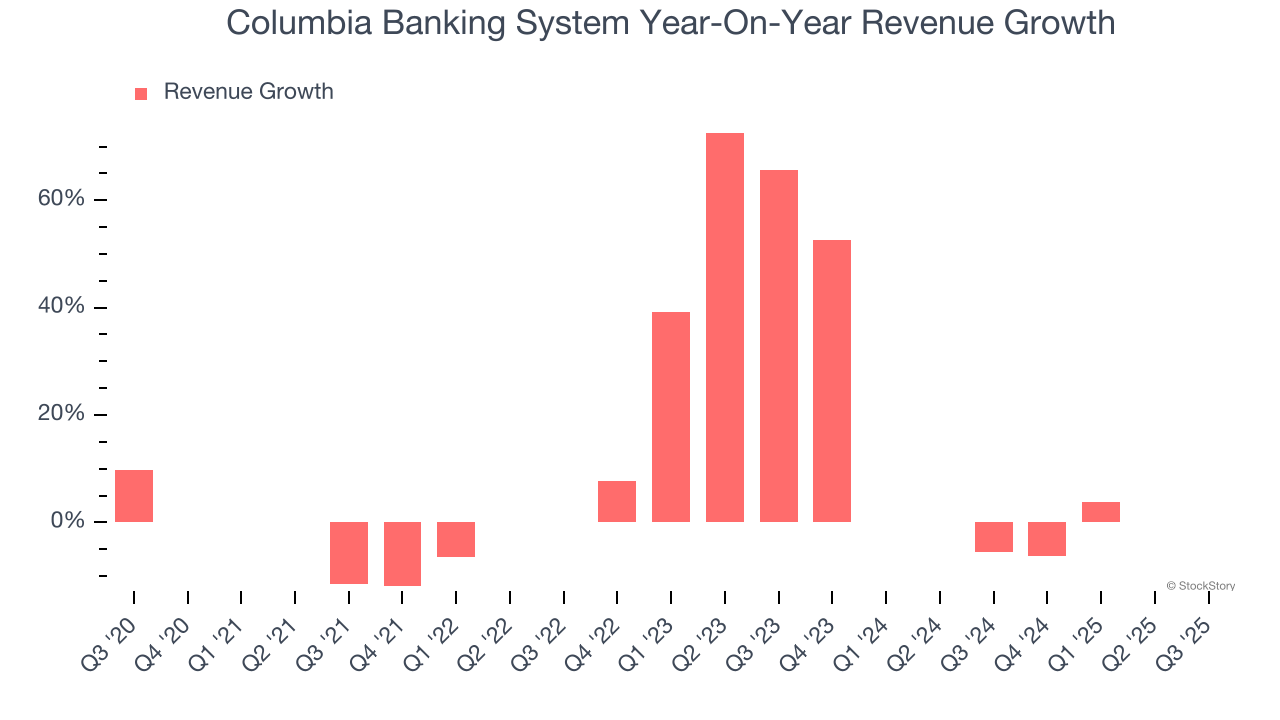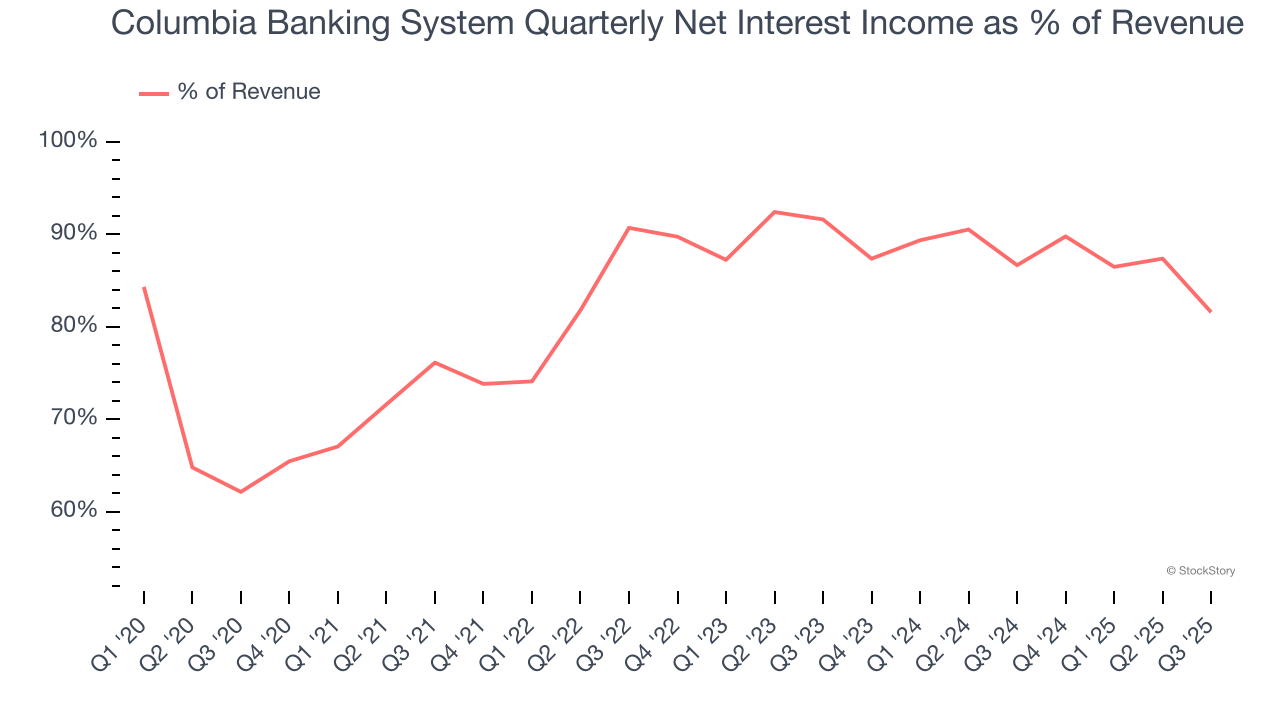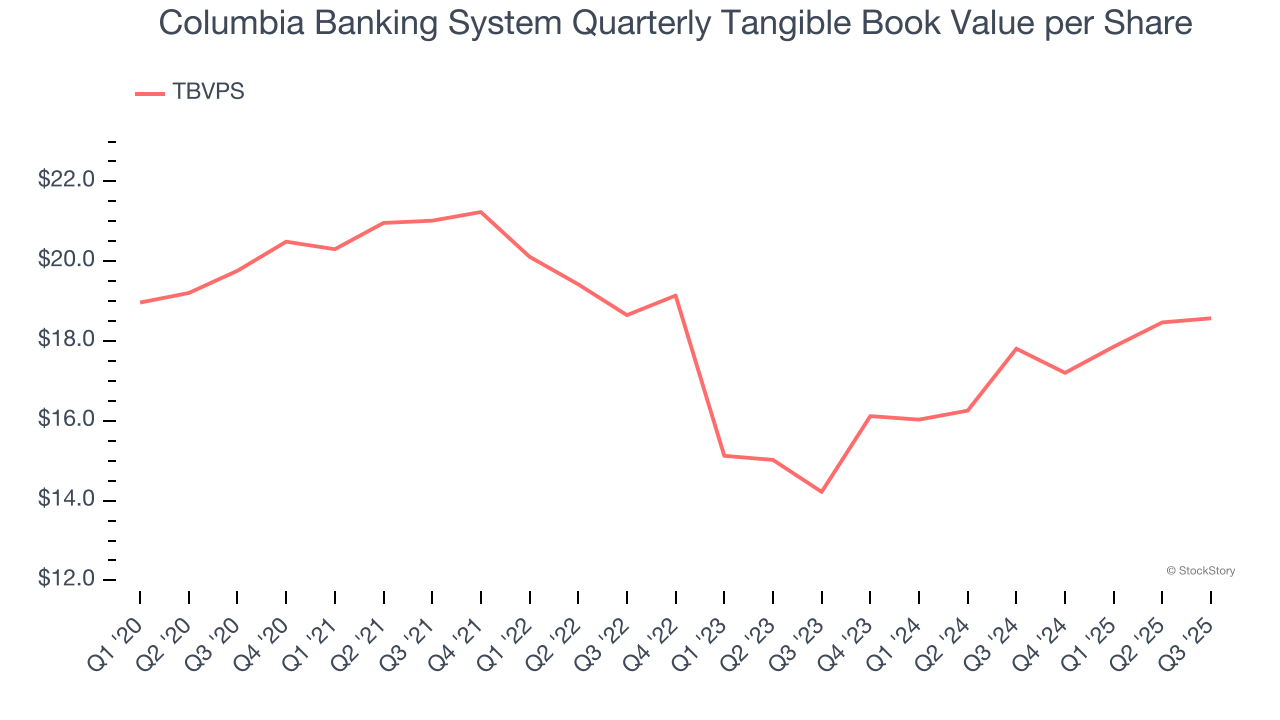
Regional banking company Columbia Banking System (NASDAQ:COLB) reported revenue ahead of Wall Streets expectations in Q3 CY2025, with sales up 24.7% year on year to $619 million. Its non-GAAP profit of $0.85 per share was 23.2% above analysts’ consensus estimates.
Is now the time to buy Columbia Banking System? Find out by accessing our full research report, it’s free for active Edge members.
Columbia Banking System (COLB) Q3 CY2025 Highlights:
- Net Interest Income: $505 million vs analyst estimates of $511.9 million (17.4% year-on-year growth, 1.4% miss)
- Net Interest Margin: 3.8% vs analyst estimates of 3.8% (in line)
- Revenue: $619 million vs analyst estimates of $571 million (24.7% year-on-year growth, 8.4% beat)
- Efficiency Ratio: 67.3% vs analyst estimates of 56.8% (1,049 basis point miss)
- Adjusted EPS: $0.85 vs analyst estimates of $0.69 (23.2% beat)
- Tangible Book Value per Share: $18.57 vs analyst estimates of $17.91 (4.3% year-on-year growth, 3.7% beat)
- Market Capitalization: $7.88 billion
"Our third quarter performance reflects meaningful progress and growing momentum," said Clint Stein, President and CEO.
Company Overview
Created through the merger of two Pacific Northwest banking institutions with deep regional roots, Columbia Banking System (NASDAQ:COLB) operates Umpqua Bank, providing commercial, consumer, and wealth management services across eight western states.
Sales Growth
From lending activities to service fees, most banks build their revenue model around two income sources. Interest rate spreads between loans and deposits create the first stream, with the second coming from charges on everything from basic bank accounts to complex investment banking transactions. Over the last five years, Columbia Banking System grew its revenue at an excellent 11.1% compounded annual growth rate. Its growth beat the average banking company and shows its offerings resonate with customers, a helpful starting point for our analysis.

Long-term growth is the most important, but within financials, a half-decade historical view may miss recent interest rate changes and market returns. Columbia Banking System’s annualized revenue growth of 7.7% over the last two years is below its five-year trend, but we still think the results suggest healthy demand.  Note: Quarters not shown were determined to be outliers, impacted by outsized investment gains/losses that are not indicative of the recurring fundamentals of the business.
Note: Quarters not shown were determined to be outliers, impacted by outsized investment gains/losses that are not indicative of the recurring fundamentals of the business.
This quarter, Columbia Banking System reported robust year-on-year revenue growth of 24.7%, and its $619 million of revenue topped Wall Street estimates by 8.4%.
Net interest income made up 83% of the company’s total revenue during the last five years, meaning Columbia Banking System barely relies on non-interest income to drive its overall growth.

Our experience and research show the market cares primarily about a bank’s net interest income growth as non-interest income is considered a lower-quality and non-recurring revenue source.
Here at StockStory, we certainly understand the potential of thematic investing. Diverse winners from Microsoft (MSFT) to Alphabet (GOOG), Coca-Cola (KO) to Monster Beverage (MNST) could all have been identified as promising growth stories with a megatrend driving the growth. So, in that spirit, we’ve identified a relatively under-the-radar profitable growth stock benefiting from the rise of AI, available to you FREE via this link.
Tangible Book Value Per Share (TBVPS)
Banks are balance sheet-driven businesses because they generate earnings primarily through borrowing and lending. They’re also valued based on their balance sheet strength and ability to compound book value (another name for shareholders’ equity) over time.
This is why we consider tangible book value per share (TBVPS) the most important metric to track for banks. TBVPS represents the real, liquid net worth per share of a bank, excluding intangible assets that have debatable value upon liquidation. EPS can become murky due to acquisition impacts or accounting flexibility around loan provisions, and TBVPS resists financial engineering manipulation.
Columbia Banking System’s TBVPS declined at a 1.2% annual clip over the last five years. However, TBVPS growth has accelerated recently, growing by 14.3% annually over the last two years from $14.22 to $18.57 per share.

Over the next 12 months, Consensus estimates call for Columbia Banking System’s TBVPS to grow by 6.8% to $19.83, mediocre growth rate.
Key Takeaways from Columbia Banking System’s Q3 Results
It was good to see Columbia Banking System beat analysts’ EPS expectations this quarter. We were also excited its revenue outperformed Wall Street’s estimates by a wide margin. On the other hand, its net interest income slightly missed. Zooming out, we think this was a good print with some key areas of upside. The stock remained flat at $26.02 immediately after reporting.
Indeed, Columbia Banking System had a rock-solid quarterly earnings result, but is this stock a good investment here? We think that the latest quarter is only one piece of the longer-term business quality puzzle. Quality, when combined with valuation, can help determine if the stock is a buy. We cover that in our actionable full research report which you can read here, it’s free for active Edge members.
